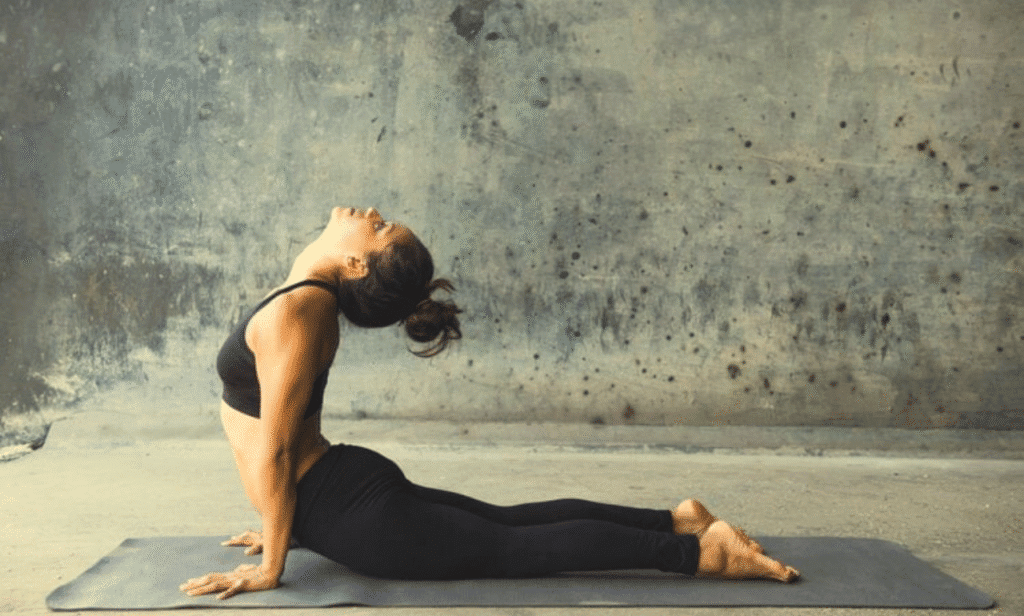
The Modern Problem of a Stiff Body
In today’s world, many of us spend hours sitting, whether at a desk, in a car, or on a couch. This sedentary lifestyle creates a cascade of physical issues: tight hips, a stiff back, hunched shoulders, and a general feeling of being “locked up.” It’s not just about feeling inflexible; it’s about a loss of the natural, fluid movement our bodies are designed for. The good news is that reclaiming this mobility doesn’t require hours at the gym. According to seasoned yoga instructors, the solution can be surprisingly simple and incredibly time-efficient. By dedicating just eight minutes a day to a targeted mobility sequence, you can counteract the effects of modern life and awaken your body’s innate capacity for movement.
Why Mobility is More Important Than Pure Flexibility
Many people use “flexibility” and “mobility” interchangeably, but there is a crucial distinction. Flexibility is the passive ability of a muscle to stretch. You can be flexible by lying on the floor and having someone push your leg toward your head. Mobility, on the other hand, is the active, functional version of flexibility. It is your body’s ability to move a joint through its full, intended range of motion under control and with strength. Think about a deep squat: it requires not just flexible hamstrings and calves but also strong, mobile ankles, hips, and a stable core. This is why mobility work is so vital—it prepares your body for real-world movements, improves posture, reduces the risk of injury, and alleviates everyday aches and pains.
The Science Behind Short, Consistent Movement Practices
You might wonder if eight minutes is truly enough to make a difference. The science of habit formation and neuromuscular adaptation suggests that it is more than sufficient. Consistency trumps duration every single time. A short, daily practice is far more sustainable and effective than an hour-long session once a week. From a physiological standpoint, movement acts as a signal to your body. It tells your nervous system to “wake up” the supporting muscles around a joint. It stimulates the production of synovial fluid, which lubricates your joints, much like oiling a rusty hinge. Furthermore, it helps to hydrate the fascia, the connective tissue that weaves throughout your body, preventing it from becoming tight and restrictive. This brief daily investment keeps the communication lines between your brain and body open and active.
Deconstructing the 8-Minute Full Body Mobility Sequence
This specific eight-minute routine is designed with efficiency in mind. It strategically targets the major areas of the body that are most prone to stiffness: the spine, hips, shoulders, and ankles. The sequence is built on a foundation of fundamental yoga poses, but the focus is not on holding a perfect shape. Instead, the emphasis is on movement within the pose—exploring the range of motion, feeling for tight spots, and gently encouraging the body to open up. The goal is not to force yourself into a deep stretch but to create space and circulation. This makes it accessible for nearly everyone, regardless of current fitness level or experience with yoga.
Movement One: Awakening the Spine with Cat-Cow
Begin on your hands and knees in a tabletop position. Ensure your wrists are stacked under your shoulders and your knees are under your hips. As you inhale, drop your belly towards the floor, lift your gaze, and your tailbone towards the ceiling. This is Cow pose, creating a gentle backbend through your entire spine. As you exhale, reverse the movement: round your spine towards the ceiling, tuck your tailbone, and draw your chin towards your chest. This is the Cat pose. Move fluidly between these two shapes, linking your breath to each movement. Spend a full two minutes here, allowing your spine to articulate segment by segment. This movement warms up the entire vertebral column, massages the spinal discs, and relieves tension in the back.
Movement Two: Mobilizing the Hips with Dynamic Pigeon Pose
From the tabletop, bring your right knee forward towards your right wrist, and place your right ankle near your left wrist. Your shin can be parallel to the front of the mat, or if that’s too intense, at a more comfortable angle. Slide your left leg straight back. This is the starting position for Pigeon pose. Instead of holding it statically, you will add movement. On an inhale, gently shift your torso forward, feeling a stretch in the front of your left hip. On an exhale, shift your weight back, sitting a little deeper. You can also make small circles with your torso to explore different angles in the hip socket. Continue this for one minute, then slowly switch sides and repeat for another minute on the left leg. This dynamic approach is exceptional for releasing deep hip tension.
Movement Three: Opening the Chest and Shoulders with Thread the Needle
Come back to your hands and knees in the tabletop. Inhale, and as you exhale, slide your left arm underneath your right arm, resting your left shoulder and temple on the floor. Your palm can face up. You should feel a deep stretch through your left shoulder blade and upper back. To make this dynamic, you can gently rock back and forth or make tiny circles with your right hand, which is still planted on the floor. Hold and explore the movement for about 30 seconds. Then, as you inhale, slowly windmill your left arm up and open, twisting your torso and reaching toward the ceiling, following your hand with your gaze. This adds a rotational element. Alternate between “threading the needle” and the open twist a few times before switching to the other side for a full minute. This combats the rounded shoulder posture from hunching over screens.
Movement Four: Integrating the Body with a Slow Flow Sun Salutation
A Sun Salutation is a classic yoga sequence that beautifully integrates movement for the whole body. For this routine, you will perform it slowly and mindfully. Stand at the top of your mat. Inhale, sweep your arms overhead. Exhale, fold forward, bending your knees as much as needed. Inhale, lift your chest to a flat back. Exhale, step back into a high plank, and lower your knees, chest, and chin to the floor. Inhale, slide forward into a low Cobra pose. Exhale, push back to child’s pose. Inhale, walk your hands back to your feet. Exhale, fold. Inhale, rise to stand. This entire flow should be performed with smooth, connected movements, taking about two minutes for two to three rounds. It links the spine, hips, shoulders, and legs into one cohesive movement pattern.
Movement Five: Grounding and Integrating with Deep Breathing
After your final Sun Salutation, come to a comfortable seated position or simply lie flat on your back. Place one hand on your heart and the other on your belly. Close your eyes if it feels comfortable. For one final minute, simply focus on your natural breath. Feel the rise and fall of your chest and abdomen. Observe the sensations in your body—the warmth in your joints, the sense of space you’ve created, the feeling of being more connected to your physical self. This brief period of integration allows your nervous system to register the benefits of the practice and helps to solidify the mind-body connection, leaving you feeling centered and calm.
Making the Practice a Sustainable Daily Habit
The true power of this routine lies not in its complexity but in its repeatability. The key is to make it a non-negotiable part of your day, much like brushing your teeth. It can be your morning ritual to wake your body up, a midday reset to break up long periods of sitting, or an evening wind-down to release the physical tension of the day. By committing to this short sequence, you are sending a consistent message to your body that it is meant to move freely and without pain. Over time, you will likely notice improvements that extend far beyond the eight minutes—easier movement, better posture, and a greater sense of physical confidence in everything you do.
